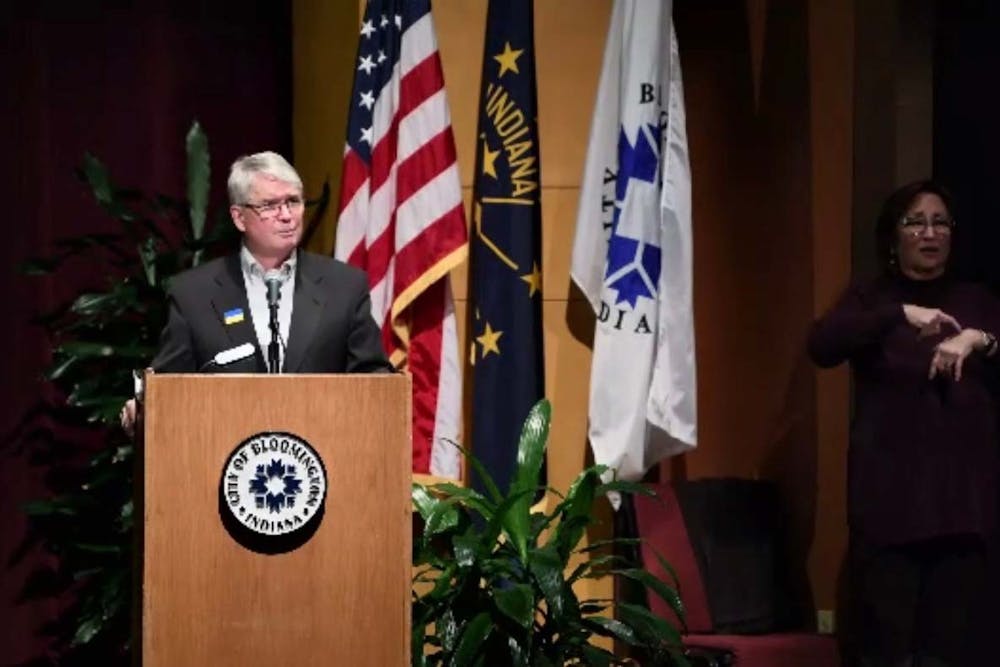When Bloomington Mayor John Hamilton presented his seventh State of the City address Feb. 24, one hot-topic issue was tucked into the middle of the speech: a potential rise in local income tax rates.
Hamilton is no stranger to supporting such increases. In September 2020, Hamilton supported a 0.25% increase to the local income tax rate. He also voiced his support for a tax increase in his 2021 State of the City address. Nevertheless, the local income tax never increased.
Hamilton’s administration is now making another push, asking the city council to consider a 0.855% increase to local income tax rates.
The local income tax in Monroe County hasn’t had a general increase in nearly three decades, Hamilton said in a city press release.
“We have more parks and sidewalks now,” Hamilton said. “We have more residents and more employers. We face a climate emergency. Our residents need more affordable housing.”
Bloomington’s city council will begin discussions on local income taxes at its Wednesday meeting, according to the release. The council will hear public comment on the proposal at its April 13 and 20 meetings.
What does the city want the increase for?
The city wants to use the revenue generated from the tax increases to pay for various services, including public safety upgrades, climate preparedness programs and quality of life services.
Nearly $4.5 million would be earmarked for public safety, which would include $1.5 million for sworn police officer salaries and $2.5 million for police and fire station upgrades.
If the council accepts the proposal, Bloomington Transit would be one of the largest beneficiaries of the new revenue, according to city documents. The city would commit $300,000 to add Sunday service to Bloomington Transit’s schedule and $100,000 to subsidize ridership for low-income riders.
Other major proposals included in the package are a $2 million allocation for housing equity projects and $500,000 to support workforce development.
What needs to happen before local income taxes can be raised?
In Indiana, local income taxes are assessed by counties, not cities. Bloomington is not the only locality in Monroe County. It is joined by two towns, Ellettsville and Stinesville. To raise taxes, council members from both of those towns, the Monroe County Council and Bloomington’s city council, vote in a body called the Local Income Tax Council.
There are 24 voting members of the LIT Council, and each member is given voting power allocated based upon population, according to city documents. For example, each of Bloomington’s nine city council members gets 6.3 votes while each of Stinesville’s three council members gets .05 votes.
There are 100 votes total, and a majority is required to raise the income tax. If all nine of Bloomington’s city council members vote together, they automatically make up the majority of the LIT Council.
Is Monroe County’s current tax rate already high?
There are 92 counties in Indiana. Monroe County’s LIT rate is the 23rd lowest in the state, according to Indiana Department of Revenue information.
Out of the top 15 most populated counties in the state, Monroe County’s tax rate is ranked ninth. According to estimates from the U.S. Census Bureau, Monroe County is the 12th highest populated county in Indiana.
“Raising revenue always demands a careful review,” Hamilton said in a March 17 video. “The plain facts are that we face urgent and fundamental needs ahead.”




